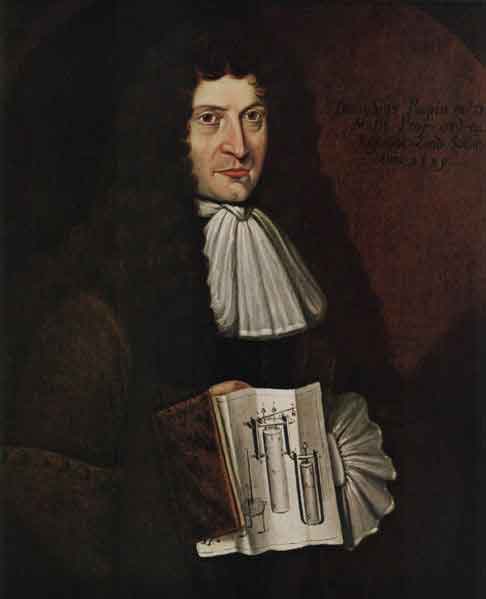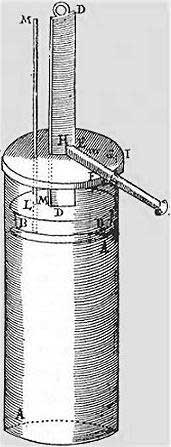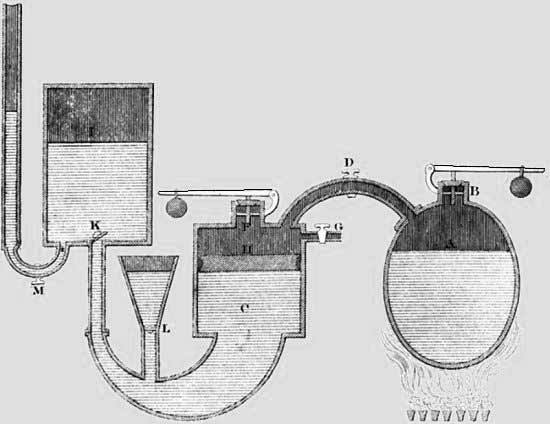.
Denis Papin
Denis Papin (22 August 1647 - c. 1712) was a French physicist, mathematician and inventor, best known for his pioneering invention of the steam digester, the forerunner of the steam engine.
Life in France
Born in Blois, (Loir-et-Cher, Centre Région), Papin attended a Jesuit school there, and from 1661 attended University at Angers, from which he graduated with a medical degree in 1669. In 1673, while working with Christiaan Huygens and Gottfried Leibniz in Paris, he became interested in using a vacuum to generate motive power.

Denis Papin, unknown artist, 1689.
First visit to London
Papin first visited London in 1675, and worked with Robert Boyle from 1676 to 1679, publishing an account of his work in Continuation of New Experiments (1680).[1] During this period, Papin invented the steam digester, a type of pressure cooker. He first addressed the Royal Society in 1679 on the subject of his digester, and remained mostly in London until about 1687, when he left to take up an academic post in Germany.

The first piston steam engine, 1690.
A Huguenot, Papin was greatly affected by the increasing restrictions placed on Protestants by Louis XIV of France and the King's ultimate revocation of the Edict of Nantes in 1685. In Germany he was able to live with fellow Huguenot exiles from France.
While in Leipzig in 1690, having observed the mechanical power of atmospheric pressure on his 'digester', he built a model of a piston steam engine, the first of its kind.
He continued to work on steam engines for the next fifteen years. In 1705 he developed a second steam engine with the help of Gottfried Leibniz, based on an invention by Thomas Savery, but this used steam pressure rather than atmospheric pressure. Details of the engine were published in 1707.
During his stay in Germany, in 1704, he also constructed a ship powered by his steam engine. The engine was mechanically linked to paddles. This would then make him the first to construct a steam boat.

Second Papin steam engine, 1707.
Return to London
Papin returned to London in 1707, leaving his wife in Germany. Several of his papers were put before the Royal Society between 1707 and 1712 without acknowledging or paying him, about which he complained bitterly. Papin's ideas included a description of his 1690 atmospheric steam engine, similar to that built and put into use by Thomas Newcomen in 1712, coincidentally thought to be the year of Papin's death. Although there is no evidence of foul play, political and religious intrigue plagued the science of the day, as well as personal rivalries. As a friend of Leibniz, Papin would have been at odds with Isaac Newton, President of the Royal Society.
The last evidence of Papin's whereabouts was a letter he wrote dated January 23, 1712. At the time he was destitute, and it is believed he died that year and was buried in an unmarked pauper's pit.
References
- ^ Anita McConnell, 'Papin, Denis (1647–1712?)', Oxford Dictionary of National Biography, Oxford University Press, 2004, accessed 29 April 2006]
Links
O'Connor, John J; Edmund F. Robertson "Denis Papin". MacTutor History of Mathematics archive.
Retrieved from "http://en.wikipedia.org/"
All text is available under the terms of the GNU Free Documentation License

